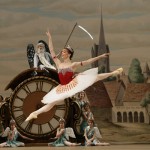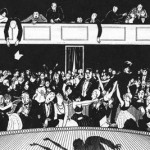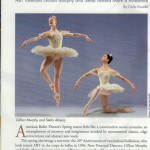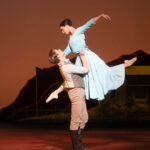Alastair Macaulay for The New York Times calls it “timeless and modern” though he complains about the “anonymous” character of the lead role, danced on opening night by Natalia Osipova. He misses the point that Alexei Ratmansky has reimagined the lead as the commanding officer of an entire troop of Firebirds – costumed identically, as are the villain’s harem of brainwashed maidens. Macaulay apparently does not appreciate this Socialist slant on the storytelling ballet – a deliberate and daring departure from the tradition of setting soloists apart from the corps with costume flourishes and bigger tiaras.
Apollinaire Scherr for the Financial Times gets it, though, and applauds “the genius of Alexei Ratmansky – American Ballet Theatre’s artist in residence.”
Robert Greskovic for the Wall Street Journal admiringly notes that “unforgiving traditionalists will no doubt be left reeling by Mr. Ratmansky’s bold changes”.
Joan Acocella for the New Yorker calls it "wonderfully weird" and gleefully exclaims: “What a friend Russia has been to us, raising up such wonderful artists who then find it impossible to work there! Fokine, Stravinsky, Lopoukhov, Massine, Balanchine, Ratmansky. (I omit the dancers.) Where does it end?”
Marina Harss writes: "the richness of [Ratmansky’s] imagination is astounding". She echoes several critics who find this choreography a glorious, intriguing mess. Until the finale, that is, when order and clarity reign. “The creaky tree trunks turn out to double as jail cells; as [Prince] Ivan opens them, young men stumble out, like political prisoners seeing daylight for the first time in years. The image resonates. To Stravinsky’s regal, slow finale, they dance in harmony, finally arrayed in clean lines…”





